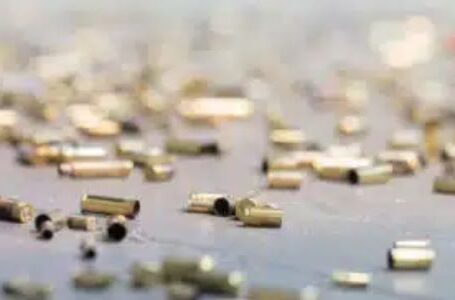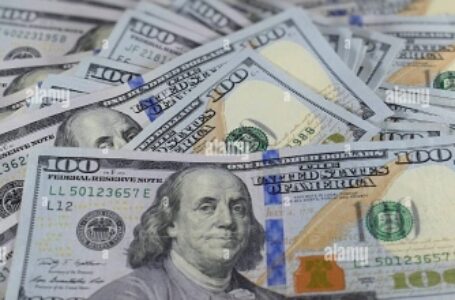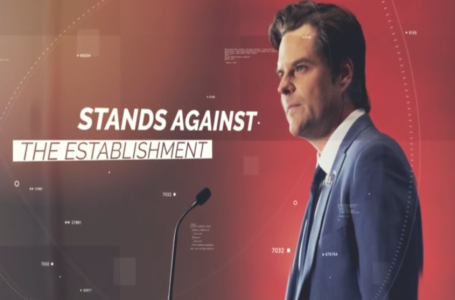In Molenbeek: Jihadists, Guns and (Drug) Money

COMING TO A STATE NEAR YOU
by Abigail R. Esman
IPT News
July 6, 2022
Gunshots. Knifings. Cars being set aflame. All in broad daylight, all on the streets of Molenbeek.
Molenbeek, Belgium, you may recall, was the Brussels neighborhood that was home to almost half of the jihadists responsible for the 2015 Paris attacks and several subsequent terror attacks in Belgium. The bomber of a train at Brussels Central Station in 2017, for instance, lived in Molenbeek. Mehdi Nemmouche, who shot and killed four people at Brussels’ Jewish Museum in 2014, had previously lived in Molenbeek. The mastermind of the Paris killings, Abdelhamid Abboud, grew up and still lived in Molenbeek.
Most of Molenbeek’s population is Moroccan, though immigrants from elsewhere in North Africa and from Eastern Europe have also settled there. It is an area of Brussels where, according to the Oasis Center, an Italian foundation that studies relations between Muslims and Christians, “a type of Islam has been propagated over the decades that, if not radical, has nevertheless prepared the ground in which the radicalism would then take root.”
But the largely Muslim community of Molenbeek (pronounced MOLE-en-bake) is not just known for raising young Islamist radicals and jihadists; it has also long served as a center for illegal drug trade, with much of the drug income helping to finance Islamist militant groups. Indeed, one main meeting place for the Paris attackers was a Molenbeek café owned by Salah Abdeslam, the only surviving member of the group, and his brother, who died in the attacks.
“There was a group of drug traffickers active in the café,” Molenbeek’s then-Mayor Francoise Schepmans noted shortly after the Paris massacres. “From such delinquency, it’s only a small step to radicalization.”
A French court declared Abdeslam guilty of terrorism and murder on June 29 in Paris, and sentenced him to life without parole – the harshest sentence under French law. Ten additional conspirators were convicted Thursday by a Belgian court.
Despite Islam’s strict prohibitions on drugs and alcohol, a report by the European Monitoring Centre for Drugs and Addiction and the International Centre for the Study of Radicalization noted that “[m]any jihadists in Europe continue to use or deal drugs while simultaneously engaging with extremist ideas or networks, showing how involvement in jihadism and involvement in drugs are not mutually exclusive.”
Several of the Brussels and Paris attackers had also been involved in the drug underworld.
After the Paris and Brussels attacks, however, Molenbeek witnessed something of a transformation, thanks in part to the so-called “Kanaalplan” (Canal Plan), which invested nearly €40 million in the central Brussels region to strengthen the police force, build and improve housing, create community centers for local youth, and develop the local economy. The goal, according to UN Habitat, was a “holistic transformation” that would create “a more sustainable, productive, and inclusive territory.” And for a while, it worked. Non-Muslims – mostly artists – moved into the area. A new museum of contemporary art opened, as did a center for art and technology. World media celebrated the progress being made there, and the absence of jihadist activity in Molenbeek and nearby communities.
It didn’t last.
These days, as the local drug gangs controlled by Albanians and Moroccans battle openly on Molenbeek’s streets, officials fear a new jihadist generation may quietly be emerging. “Religious radicalism has not died out in Molenbeek, but it is certainly more discreet,” the Luxemburg Times recently noted. And the Belgian Times reported earlier this year that “[t]errorism remains the number one issue for security officials in Belgium. They know that Islamic terrorism has deep roots in the country, and even if it is dormant today, it could re-emerge tomorrow.”
Moreover, the return of Belgian jihadists from the Islamic State – most of them women and children – poses an additional threat. As early as 2014, Barack Obama cautioned, “thousands of foreigners, including Europeans and some Americans, have joined them [Islamic State forces] in Syria and Iraq. Trained and battle-hardened, these fighters could try to return to their home countries and carry out deadly attacks.” More recently, the George Washington University Program on Extremism warned, “Despite the relatively low number of returning foreign fighters, the terrorist threat posed by those returnees remains significant… they will be involved acts of domestic terrorism, using the skills and experience they have gained while fighting under IS in Iraq and Syria.”
Even without concerns of Islamist terrorism, the violence in Molenbeek has reached unmanageable heights. After Covid restrictions closed shops and cafes and discouraged people from assembling indoors, officials say, drug dealers moved brazenly from small back-room spaces out into the streets. The situation has only deteriorated since. “The general pattern is violence between drug gangs over territory,” Mayor Catherine Moureaux told Brussels news site Bruzz. “We’ve now seen a period before Covid-19 and after: since then, conflicts have grown more heated, there is more money and more weapons circulating, and we are dealing with more organized gangs.”
Added Moureaux’s spokesman, Rachid Barghouti, “We can manage small street dealers, but this goes much further.”
With 13 shootings since September – one of them just steps from an elementary school – “much further” is something of an understatement. In one June weekend, a man was shot, four cars were set aflame in an arson attack, and a second man was fatally stabbed in a knife fight. Americans may be accustomed to this kind of violence and the presence of guns on city streets, but both are rare in Europe. True, the shootings in Molenbeek are not aimed at murdering enemy gang members. Rather, gunmen shoot their adversaries in the legs, aiming more to threaten and intimidate than to kill. This seems to be true, too, of the knife attacks and car burnings. Nonetheless, the frequency and boldness of the violence makes it clear that this is not just about ruling drug turf. It is about power, about domination and control. It is about who rules life in Molenbeek, and the culture of crime, radicalization, and violence that reigns there.
 IPT Senior Fellow Abigail R. Esman is a freelance writer based in New York and the Netherlands. Her new book, Rage: Narcissism, Patriarchy, and the Culture of Terrorism, was published by Potomac Books in October 2020. Follow her at @abigailesman.
IPT Senior Fellow Abigail R. Esman is a freelance writer based in New York and the Netherlands. Her new book, Rage: Narcissism, Patriarchy, and the Culture of Terrorism, was published by Potomac Books in October 2020. Follow her at @abigailesman.
Copyright © 2022. Investigative Project on Terrorism. All rights reserved.















